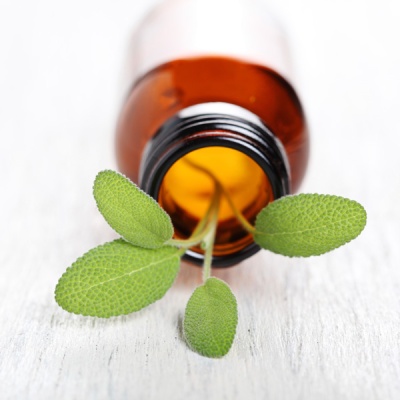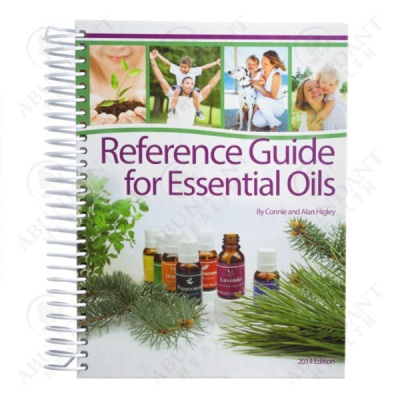Are you new to essential oils and unfamiliar with the lingo? Even if you aren’t an essential oil newbie, this post might be a good refresher for you or help you be able to explain this stuff to others.

Essential Oils (often abbreviated as EO): Substances created inside aromatic plants that are both volatile (they evaporate) and oil soluble (they easily mix with oils and fats).
Volatile: A substance that will evaporate when exposed to air is referred to as volatile. Volatile substances are typically light substances with small molecules.
Single Oil: A single oil is one type of oil (e.g. lemon, peppermint, lavender) by itself.
Oil Blend: An oil blend is a mixture of two or more single oils. Oils are typically blended to combine their individual properties or aromas.
Therapeutic Grade: This refers to the quality of the essential oil. One of the factors that determines the purity and therapeutic value of an oil is its chemical constituents. These constituents can be affected by a vast number of variables, including the part(s) of the plant from which the oil was produced, soil condition, fertilizer (organic or chemical), geographical region, climate, altitude, harvest season and methods, and distillation process. When using essential oils for therapeutic purposes, it is necessary to obtain the purest therapeutic-grade essential oils possible. Anything less than pure, therapeutic-grade essential oil may not produce the desired results and can, in some cases, be extremely toxic.
Steam Distillation: In this method of extraction, plant material is placed in an extraction chamber, and then steam (produced by boiling water in another chamber) is released into the bottom of the extraction chamber where the plant material is. Both the steam and the essential oil rise to the top (this is because essential oils are volatile). The steam and essential oil are directed to another chamber where they are allowed to cool. Since essential oils are hydrophobic (essential oils do not mix with water), as the oil/steam mixture cools, the essential oil rises to the top of the chamber while the water stays at the bottom. The essential oil can then be easily separated from the water.
Cold Pressed: Cold expression, or cold pressing, is the method most commonly used for extracting essential oils from citrus fruits. Mechanical pressure is used to “press” the oils out of the plant material—most often from the peel or rind.

Topical Application: Topical application means that the oils are applied directly to the skin, hair, or other surface of the body. This can be through massage, bath, direct application of the oils, or application of the oils within a cream, lotion, bath gel, or soap. While many oils can be applied neat (without dilution), others may need to be diluted with a vegetable or “carrier oil” before topical application, especially in cases of young or sensitive skin.
Carrier Oil: A carrier oil is a vegetable oil derived from the fatty portion of a plant, usually from the seeds, kernels, or the nuts. Carrier oils are used to dilute and “carry” an essential oil into the skin during topical application. Common types of carrier oils include Almond Oil, Fractionated Coconut Oil, Jojoba Oil, Coconut Oil, and olive oil.
FCO: FCO is an abbreviation for Fractionated Coconut Oil. This oil is a common carrier oil because it is clear, odorless, and absorbs easily into the skin.
Neat: This refers to the essential oil being applied without dilution.
 Dilution: This refers to combining an essential oil with a carrier oil so its effects are not so concentrated in one area. Since essential oils are really potent, and some oils may cause irritation, diluting the essential oil with a carrier oil is recommended. Children, pregnant women, and those with sensitive skin should always dilute essential oils. Please see the Single Oils section of the Reference Guide for Essential Oils for recommended dilutions. Diluting an essential oil in carrier oil is also a great way to help spread the essential oils over a larger area.
Dilution: This refers to combining an essential oil with a carrier oil so its effects are not so concentrated in one area. Since essential oils are really potent, and some oils may cause irritation, diluting the essential oil with a carrier oil is recommended. Children, pregnant women, and those with sensitive skin should always dilute essential oils. Please see the Single Oils section of the Reference Guide for Essential Oils for recommended dilutions. Diluting an essential oil in carrier oil is also a great way to help spread the essential oils over a larger area.
Roll-on: A roll-on bottle (or roller bottle) is useful for diluting an essential oil for topical application and applying essential oils easily to the skin.
Photosensitive: Using some oils such as lemon, orange, grapefruit, mandarin, bergamot, angelica, etc. before or during exposure to direct sunlight or UV rays (tanning beds, etc.) may cause a rash, pigmentation, or even severe burns. These oils are designated as photosensitive, and care should be taken after applying these oils on the skin to protect the skin from direct, prolonged ultraviolet light exposure for 1–3 days.

Aromatic Application: Aromatic application means that oils are inhaled through the mouth and nose. This could include inhaling the aroma of the oil directly from the bottle or inhaling the aroma of the oil after it has been applied to the hands or to another material, such as a tissue or a cotton wick. It could also mean breathing in the vapor or mist of an oil that has been diffused or sprayed into the surrounding air.
Diffuse: The definition of diffuse is to spread or cause to spread something over a wide area. So, in the essential oil world, to diffuse means to spread essential oils into the air. Sometimes, the oils are diffused over a wide area; but other times, the oils are diffused within one’s personal space.
Diffuser: A diffuser is a device that disperses oil into the air. There are 4 types of diffusers: nebulizing diffusers (diffuses straight oil), humidifying/ultrasonic diffusers (uses water and an ultrasonic disc to diffuse the oil), fan diffusers (a fan blows the oils into the air), and heat diffusers (uses heat to help disperse the oil). Click here for more information about diffusers.

Internal Application: Internal application means that the oils are taken orally as a dietary supplement. This is done either by adding the oil to a food or beverage that is then consumed or by swallowing a capsule with the oil inside. Not all essential oils can be taken internally. Please see the Single Oils section of the Reference Guide for Essential Oils for oils safe for consumption.
Capsules: One of the best ways to take essential oils internally is with the aid of empty capsules. Using capsules allows one to not only bypass any unpleasant tastes, but it also enables the oils to descend to the right area of the body before dissolving to allow for greater absorption. It is important to dilute essential oils when using a capsule. The best way to do this is fill the capsule halfway with essential oil and halfway with olive oil. You can dilute your essential oils ahead of time in a dropper bottle for an easier time filling the capsule when you need it.

Reference Guide for Essential Oils by Connie and Alan Higley: This book is sometimes referred to as the Higley Book, the Reference Guide, or abbreviated as RG. The Reference Guide to Essential Oils is very useful in understanding and using essential oils. In fact, most of the information in this article can be found in the Reference Guide. The book contains several sections including Science and Application, Single Oils, Oil Blends, Personal Care Products, Supplements, and the Personal Guide as well as many useful charts and helpful information. You can look up an oil and see what information is available relating to it and what it can be used for. You can also search by a condition and see what oils can be used to help.
Oils and Water: Oil and water do not mix! If essential oils get into your eyes by accident or if they burn the skin a little, do not try to remove the oils with water. Water will only drive the oils deeper into the tissue. It is best to dilute the essential oils with a pure vegetable oil or carrier oil.
Source: Reference Guide for Essential Oils by Connie and Alan Higley, 2014 Edition


4 Comments
Leave a reply →